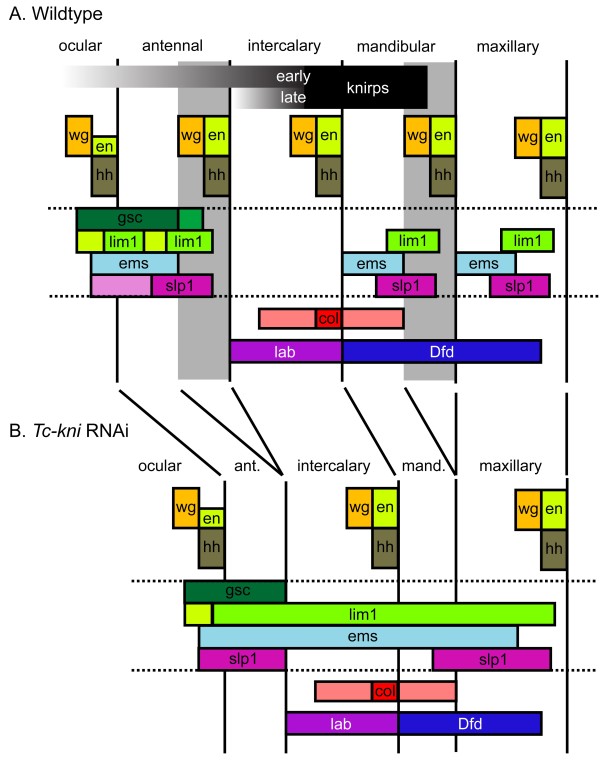Figure 8.
Schematic diagrams summarizing the expression of Tribolium head genes in wildtype and Tc-kniRNAi embryos. Changes in marker gene expression following Tc-kni RNAi are consistent with a failure to specify and form posterior antennal and mandibular segmental regions (marked in grey in A, and deleted in B). Deletion of these regions explains the absence of segment polarity gene expression in antennal and mandibular segments, the deletion of posterior regions of the ocular/antennal domains of Tc-gsc and Tc-lim1 at early stages, the reduced width of the Tc-Dfd domain, and the reduction in distance between antennal, mandibular and/or maxillary domains of Tc-lim1, Tc-ems and/or Tc-slp-1. Abnormalities in the expression patterns of the genes bounded by the horizontal doted lines are most apparent in lateral regions of the germband. Additional defects affecting the maxillary segment have to be assumed to explain the fusion of respective Tc-ems and Tc-slp stripes. These could be due to aberrant morphogen signaling of the mandibular parasegment boundary. In Tc-kni RNAi, the antennal parasegment boundary is never established while our model assumes that the posterior of the mandibular segment is lost later due to disturbance of the wg/hh/en regulatory loop. Lightly shaded regions represent early aspects of expression that do not persist to later stages. See Figure 10 and text for details.

